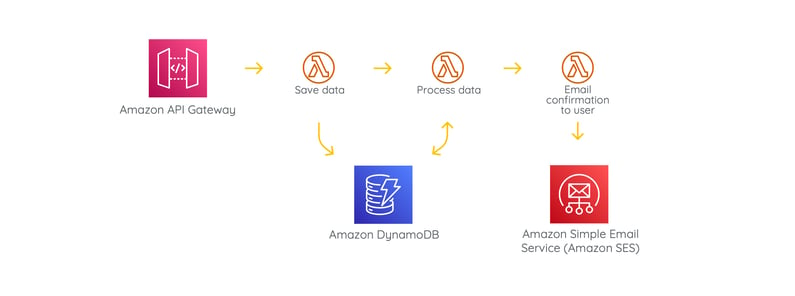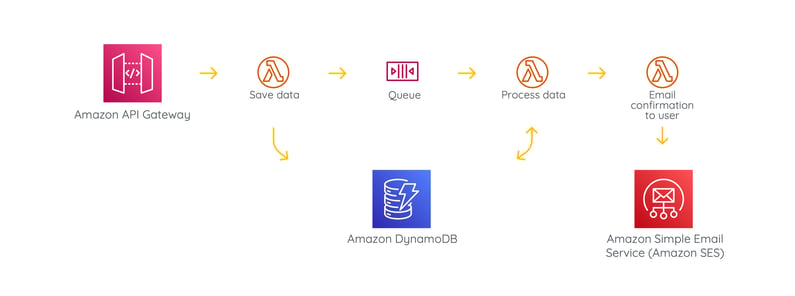A good architect is constantly thinking about the growth of the application... Using a queue strategically in your architecture can save you from future customer complaints and downtime...
AWS Simple Queue Service (SQS) and Decoupled Architectures
Benefits and Use Case Examples
![]()
Simple Queue Service (SQS) is a distributed message queue service in AWS that enables you to decouple the components of a cloud application. By using SQS, you can send, store, and receive messages between software components at any volume, without losing messages or requiring other components to be available.
Benefits of Using SQS
Using SQS in your AWS architecture helps ensure that your application can continue to run and scale even if individual components fail. Benefits include:
Scalability
SQS automatically scales as your needs change, so you don't have to worry about capacity planning or manual administration.
Reliability
SQS provides at-least-once delivery of messages, meaning that messages are delivered once and duplicates are deleted automatically (for FIFO queues), even in the event of a failure.
Flexibility
SQS integrates with other AWS services, making it easy to add message-based workflows to your application.
Cost-Effectiveness
SQS is priced based on the number of requests and the amount of data you transfer, so you only pay for what you use.
Maintainability
SQS allows you to take parts of your infrastructure offline for a period (up to 14 days) by retaining message requests until the infrastructure is repaired.
Testability
By encapsulating parts of your infrastructure with SQS, you can test your infrastructure by sending specific messages to test input/output responses.
SQS Decoupling: Use Case 1
Using a queue is a great way to decouple segments of your infrastructure. This serverless architecture receives a request and saves the data:

The API gateway to Lambda paradigm has a good degree of scalability and is adequate for many low-traffic use cases. But you may start to see significant timeouts as you reach 1000 concurrent requests. Let’s make this architecture more resilient by placing a queue in front of the Save Data lambda and utilizing a pattern called queue-based leveling. This acts as a buffer to manage traffic spikes so that downstream services can handle the load at the desired levels.

Adding a queue between the API gateway and your workers allows you to scale and handle spikes in your traffic. This is an easy way to dramatically increase your load capabilities. You can even batch messages to a single Lambda to further reduce cost. Using a queue also allows multiple subscribers to messages. You can use the same message to trigger multiple asynchronous workers or use different messages to trigger different workers, as seen below:

SQS Decoupling: Use Case 2
You have an API that saves some data, processes that data for 30 seconds, then sends an email confirmation to the user. Your maximum load is only 100 requests per minute, so you aren’t worried about Lambda concurrency issues:

There are potential problems if errors occur when processing the data. To handle this, add a queue in front of the Process Data Lambda:

Now that we have a queue in place, we can send a response back to the user once our data is saved and store the message that triggers processing. When the Process Data Lambda is fixed, you can release those messages held in your queue and process the data.
Planning for Growth? Implement SQS Early.
SQS can help you build a more scalable, reliable, and flexible application in AWS while reducing the complexity and cost of managing message queues. A good architect is constantly thinking about the growth of the application – and SQS is a great tool to prepare for the unexpected.

